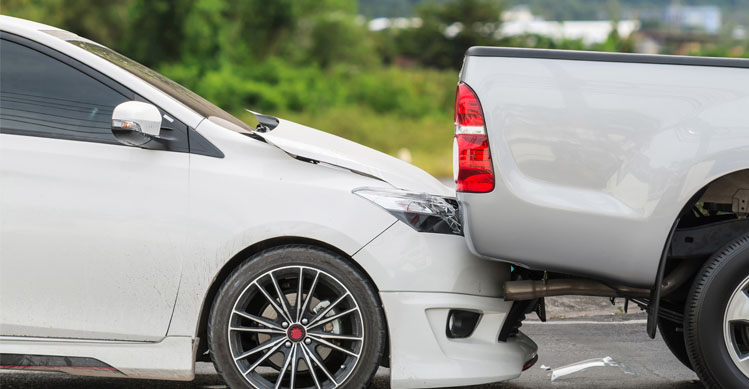Taking your vehicle for a warrant of fitness (WoF) check can be stressful, especially if your car’s getting on in years. In fact, the average age of a vehicle in NZ is 14.4 years, which is much higher than countries like the US, Canada, Australia and Europe. But there are things you can do to help your vehicle get through the inspection. By that, we mean doing some checks yourself, before you head off to the WoF station.
A warrant of fitness (WoF) determines that your vehicle meets required New Zealand safety standards. For obvious reasons, it’s illegal to drive a vehicle that is unroadworthy and/or doesn't have a current WoF sticker.
The NZTA sets the standard for the warrant assessment; this includes checking that the following vehicle aspects meet the current legal safety standard:
- Safety belts (seat belts) are in good condition
- Brakes are effective
- Tyres are correctly and adequately filled and have a safe amount of tread
- Lights are functioning correctly
- Structural condition is good and the car is free of rust
- No airbag issues or warning lights appearing on the dashboard
- Accurate and functioning speedometer
- Windows and windscreen have no cracks and work properly
- Windscreen wipers and washers work properly
- Doors open and close properly
- No leaking from the fuel system
- Steering and suspension are stable and secure
- Exhaust isn’t leaking, and sound and smoke emitted aren’t too excessive
- If your vehicle is modified, you may require a low volume vehicle certificate (mod cert)
If your vehicle fails an inspection, you have 28 days to rectify the issue. Once repairs have been sorted, you can take it back for a follow-up inspection at no extra cost. During this 28 day period, you can only drive the car to a repairer or to get your vehicle rechecked at the WoF station.
Remember that a WoF doesn’t replace a vehicle service. Passing a WoF doesn’t include in-depth analysis into other parts of the vehicle, such as transmission condition, engine, condition of paintwork, differential condition, lubricant levels, life expectancy of brake pads (unless they are visibly unsafe) and rust in non-structural areas.
At any time you’re driving, if a police officer pulls you over and says that your vehicle is unroadworthy, despite you having a current WoF, your vehicle could be ordered off the road (stickered) until it passes a new WoF inspection.
Self-checks you can do at home
If getting a WoF makes you anxious, good preparation will help to ensure a happy outcome. It’s also reassuring to know that while about 40% of vehicles fail their initial WoF inspection, most of the issues are minor and easy to deal with.
When you know you have a WoF inspection coming up put some weekend time aside for these checks:
1. Wiper blades and washers
Over time, wiper blades wear out and require replacing when they no longer wipe water and dirt away for a clear view of the road ahead. Check that the washers are working correctly too; they need to squirt enough water with the appropriate distribution to help the wipers clean without smearing and missed patches.
2. Tyre tread depth and pressure
Essential for ensuring traction, the condition of your tyres is extremely important. Check the air pressure in each tyre and always follow the PSI recommendation - you will find this on the sidewall of the tyre. Correct air pressure enables your tyres to get a better grip on the road and makes the car more fuel-efficient. While you’re doing this, also check the tread depth indicator on the tyre - the minimum legal depth is 1.5 mm, if you’re unsure, ask your local mechanic to check them for you. Unless you have the right tools at home, you're best to pop into your local gas station to check and adjust your tyre pressure, and your local mechanic to check your tread.
3. Lights
The lights on your vehicle not only to help you to see after dark, they help others to see you and your intentions. With the help of a friend, check that your headlights (including high beams), parking lights, brake lights, tail lights, fog lights and indicators all work. You can also check by parking your car in front of a window and looking at the reflection. Blown bulbs are usually easy and affordable to replace.
4. Oil level
While it’s not essential for your WoF, it’s a good idea to check your oil level from time to time. If it gets too low, you risk damaging the engine and causing it to seize. Have a look at the dipstick and top up the oil if necessary. If you’re unsure what kind of oil your car takes, have a look in the manual or call your mechanic.
5. Seats and seatbelts
In an accident, a properly functioning seatbelt could save your life. Check that all of the seatbelts retract well, have no rips, tears or frays in the edges in them or have considerable fading. If there are seats folded down in the back, put them upright. Also check that all of the belt buckles fasten securely.
6. Accessibility
Help the WoF inspector by making sure they can access areas of your vehicle with ease. Remember also to clear out your boot, so the inspector can easily check the spare wheel. If you have a child car seat installed, remove this before taking the car in for the inspection.
7. Dogs
Many people take their dogs out and about with them, but it’s not a good idea to take Snoopy to the WoF station. Alternatively, take your pooch for a walk while you wait for the inspection to be completed.
8. Servicing
A sure way to stay on top of your vehicle’s maintenance is to have a regular service, ideally at least once a year or every 10,000 kms. During the service, it’s likely your mechanic will notice defects that could prevent you from getting your next WoF. Get these fixed and you’re on target for a worry-free WoF inspection.
Do you need Car Insurance?
State offers a range of car insurance policies to meet your needs.
- Comprehensive: Comprehensive car insurance with all the bells and whistles. Whether it’s someone else’s fault or you accidentally prang your car, we’ve got your back.
- Third Party, Fire and Theft: Cover with some protection including theft and fire, damage to someone else’s vehicle or property, damage to your car by an uninsured driver or injuring someone in an accident you’ve caused.
- Third Party Only: No-frills car insurance that covers damage to someone else’s vehicle or property, your liability if you accidentally injure someone, or for damage to your car caused by an uninsured driver.
For more information or an online quote, see Car Insurance.
You might also like...
-
 February 2022Driving Blog | State Insurance
February 2022Driving Blog | State InsuranceTop 10 Suburbs for Collisions
-
 August 2020Driving Blog | State Insurance
August 2020Driving Blog | State InsuranceProtecting Your Ride
-
 August 2020Driving Blog | State Insurance
August 2020Driving Blog | State InsuranceGetting Your Car Ready for a Summer Road Trip
